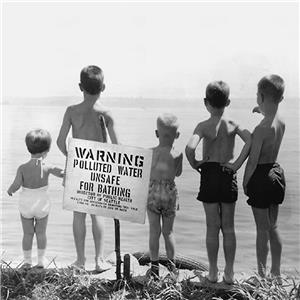On February 23, 1963, Metro first diverts treated wastewater from Lake Washington through deep tunnels to discharge into Puget Sound. Sewage from Lake Washington communities receives "secondary treatment" and then is piped to Puget Sound, which has a greater capacity than the lake to absorb the effluent. Water quality in Lake Washington begins to improve immediately.
At the time, ten publicly owned sewage treatment works were discharging treated effluent into Lake Washington. Although secondary treatment (removal of 95 percent of solids from the influent and treatment with chlorine) was very high-tech for the era, the phosphorous-rich wastewater stimulated the growth of algae. This deprived the lake of light and oxygen. When the algae died, it drifted ashore in odorous clumps. In 1955 and 1956, the State of Washington Pollution Control Commission reported that algae would eventually "take over the lake" if the discharge of treated effluent continued.
Metro -- the Municipality of Metropolitan Seattle -- was formed with the approval of voters in 1958 to provide region-wide solutions to water quality problems. Sewage treatment plants and underground tunnels were planned and constructed to connect exisiting sewer systems to a new system that would discharge treated sewage into Puget Sound. The sound's salt water and tidal actions degraded the pollution with less environmental damage.
In 1950, an eight inch disk used to test water clarity was visible from the surface of Lake Washington at a depth of 12 feet. By 1966, the lake had become so polluted that the disk could not be seen more than two feet below the surface. By 1993, after all the Metro plants became operational, the disk was visible at a depth of 25 feet.

